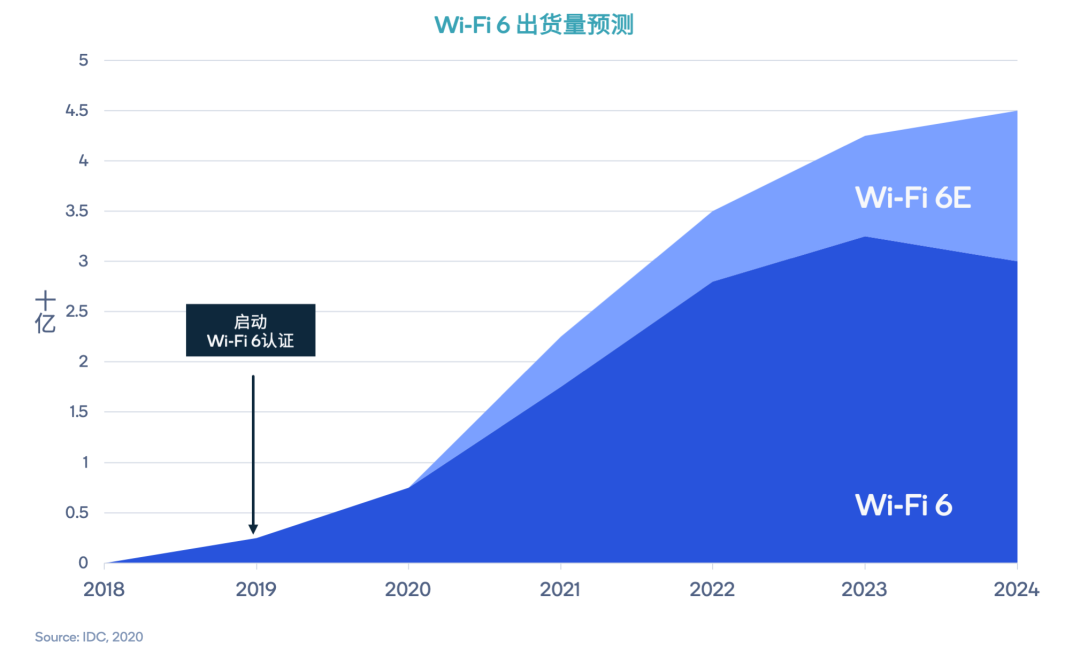If some people were unclear about the role of Wi-Fi in work, entertainment, and life in the past, the pandemic has made everyone increasingly aware of the important role Wi-Fi plays in these scenarios. Like many technologies, Wi-Fi has been continuously improving, adapting, and evolving over the past few years to meet unpredictable new connectivity challenges. Today, Wi-Fi 7 is about to open a new chapter in the field of connectivity. Qualcomm is not only dedicated to defining the ultimate speed and capacity of each generation of new Wi-Fi technology but also significantly enhances the low-latency performance of Wi-Fi technology by adding key enhanced features. Based on the optimized combination of latency, speed, and capacity in Wi-Fi 7, it will become the core of cutting-edge applications such as extended reality (XR), the metaverse, social gaming, and edge computing.
Wi-Fi 7, as an innovative solution, can meet the surge in Wi-Fi demand for current and future use cases. Next, we will reveal the superior connectivity capabilities of Wi-Fi 7.
Wi-Fi is an Essential Connectivity Technology
For many years, the core role of Wi-Fi in life, economy, and society has become increasingly important. For consumers and enterprises, Wi-Fi is a crucial resource. According to analysis company IDC, it is predicted that by the end of 2021, the shipment of Wi-Fi 6 devices will exceed 2 billion units, accounting for over 50% of all Wi-Fi device shipments, and this number will grow to 5.2 billion units by 2025. Such explosive growth is driven by many factors, one of which is that Wi-Fi technology has continuously evolved in response to growing demand. For example, Wi-Fi 6 enhances Wi-Fi performance in dense networks by introducing multi-user features, while Wi-Fi 6E extends these features to the new 6GHz band, allowing for more and wider channels to handle higher speeds and lower latency. As a product innovation from Qualcomm, routers supporting mesh technology not only provide full coverage for homes but also ensure high-speed connections when needed.

Wi-Fi 6 and Wi-Fi 6E are being adopted at record speeds, while the demand for enhancing Wi-Fi performance continues from multiple dimensions.
Wi-Fi 7 Brings a New Level of Performance
Spectrum is critical for wireless connectivity. Historically, the expansion of available spectrum has steadily driven Wi-Fi technology innovation, from the traditional 2.4GHz band with only three (non-overlapping) narrowband channels to the 5GHz band with more spectrum and channels up to 160MHz wide. Currently, the newly allocated 6GHz band in some regions (with up to 1200MHz of spectrum in some areas) and the increasingly congested 2.4GHz band (due to the growing number of Bluetooth devices and new IoT devices supporting Thread) are pushing for further changes in Wi-Fi.
Modern high-speed Wi-Fi devices increasingly rely on the high-frequency bands of 5GHz and 6GHz to achieve the desired performance. This not only ensures speed and latency but also frees up the 2.4GHz band for more suitable applications such as IoT and devices operating at the edge of Wi-Fi networks.
Managing and optimizing multiple available frequency bands may be the hallmark differentiating advantage of Wi-Fi 7. Wi-Fi 7 introduces numerous features that provide ultimate speed, high capacity, and low latency, supporting the next generation of applications and services. Next, let’s quickly review these key features.
Multi-Connection Technology Reduces Latency in Crowded Environments
Currently, access points (APs) typically support three channels, including one low-frequency band at 2.4GHz and two high-frequency bands at 5GHz and 6GHz, and this is also true for Wi-Fi 7. Depending on the availability of frequency bands in different regions, support for high-frequency bands may be two channels both in the 5GHz band or one channel in each of the 5GHz and 6GHz bands. The multi-connection feature of Wi-Fi 7 provides clients with multiple options for using these channels, most effectively leveraging the larger capacity, higher peak speeds, and lower congestion of the high-frequency bands. As shown in Figure 1, terminal connections can alternate between frequency bands. In this scheme, the terminal uses the first available frequency band for each transmission and can choose any band for the next transmission once the previous one is completed. This approach can avoid congestion in the connection link, reducing latency.

Figure 1 – Multi-connection alternation, terminals alternate between available frequency bands to reduce latency
The highest performance solution is the High Band Simultaneous Multi-Link shown in Figure 2. When frequency bands are available, terminals can operate simultaneously on two bands in real-time and aggregate their throughput. Because it can work simultaneously across frequency bands, this approach is easier to avoid congestion to achieve reduced latency.

Figure 2 – High Band Simultaneous Multi-Link aggregates high bands to provide the highest throughput and lowest latency
Expanding Large Channel Bandwidth Across Regions
It is well known that Wi-Fi 6E greatly expanded the use of wide channel spectrum, allowing multiple 160MHz channels in any region where the 6GHz spectrum is allocated. Wi-Fi 7 can double the potential channel bandwidth to 320MHz, thereby doubling theoretical capacity and significantly enhancing user data transmission speeds.
Currently, some regions can support three continuous spectrum channels of 320MHz, some regions support one, while others do not support it at all. For the 5GHz band, there are no continuous 320MHz channels, so only regions supporting 6GHz can support this continuous mode. High Band Simultaneous Multi-Link can provide a wider effective channel by aggregating two available channels. This means combining two 160MHz channels in the high band to create a 320MHz effective channel. In China, using high band simultaneous multi-link technology can achieve an effective channel of 240MHz, which means that even without the allocation of 6GHz spectrum, the advantages of Wi-Fi 7’s ultra-high throughput can still be utilized.
Support Wider Channels Even in the Presence of Interference
In certain scenarios, existing users may occupy part of the bandwidth in idle continuous channels (such as 20MHz or 40MHz), which usually prevents the AP from using that spectrum. In response, Wi-Fi 7 introduces an innovative solution called “Preamble Puncturing,” which allows APs to use the continuous channel without being affected by the aforementioned interference (as shown in Figure 3). Although the puncturing reduces the overall bandwidth, it still achieves a wider channel than other methods.

Figure 3 – Preamble Puncturing supports wider channels even in the presence of user interference
4K QAM High-Order Modulation Technology and Other Performance Enhancement Features
Wi-Fi 7 standardizes the higher-order modulation technology currently supported in Qualcomm’s Wi-Fi 6 solutions—4K QAM. The 4K QAM modulation technology can enhance speed for users closer to the AP and reserve valuable capacity for other users.
Wi-Fi 7 Empowers Exciting New Experiences and Use Cases
In addition to enhancing the performance of current applications, Wi-Fi 7 will empower many new experiences. For example, cutting-edge extended reality (XR) applications are extremely sensitive to latency; if low latency cannot be achieved, the terminals will be rendered useless. Realistic immersive XR experiences require high refresh rate HD video support, which demands very high network speeds and bandwidth. Additionally, a massive network capacity is required to support a large number of users experiencing the aforementioned applications simultaneously. Furthermore, emerging applications such as cloud gaming, social gaming, and the metaverse will continuously test the limits of wireless technology. In this regard, Wi-Fi 7 will provide us with ample performance.
In enterprise networks, intelligence and value are shifting to the edge. Edge cloud is a key component of enterprise digital transformation, and Wi-Fi is the last link for many enterprise use cases. Even in dense, high-traffic situations, the low latency and high bandwidth that Wi-Fi 7 can provide will play a crucial role in many business-critical applications. Undoubtedly, Wi-Fi 7 is destined to quickly become a prerequisite for supporting high-traffic use cases, such as in offices and entertainment venues.
Qualcomm’s Standards and Technical Leadership
Qualcomm has always been at the forefront of Wi-Fi evolution, driving industry standards and technologies to meet the growing demands of customers, devices, applications, and services.
Qualcomm has long been committed to developing groundbreaking technologies and assisting the Institute of Electrical and Electronics Engineers (IEEE) or the Wi-Fi Alliance (WFA) in standardizing them. Additionally, Qualcomm has played a key role in nearly every major phase of Wi-Fi evolution. For example, Qualcomm played a significant role in introducing MIMO and MU-MIMO in 802.11n and 11ac, and also led the introduction of OFDMA into Wi-Fi 6 (then known as 11ax), and so on. Currently, Qualcomm is working closely with all IEEE and WFA members to refine Wi-Fi 7 technology.
Qualcomm’s leadership extends beyond technology and standards development. By providing comprehensive technical features and more powerful exclusive innovative technologies across a wide range of devices and networks every year, Qualcomm ensures that users can experience the benefits brought about by extreme speeds, high capacity, and consistently low latency networks across a wide geographic range.
To learn more about Qualcomm’s Wi-Fi solutions, please click “Read Original.”

